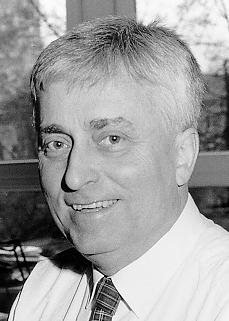Peter E. Toschek facts for kids
Quick facts for kids
Peter Toschek
|
|
|---|---|
 |
|
| Born | 18 April 1933 Hindenburg, Saxony, Prussia, Germany
|
| Died | 25 June 2020 (aged 87) Hamburg
|
| Nationality | |
| Education | University of Bonn University of Göttingen |
| Known for | laser spectroscopy, singular ions |
| Awards | Robert Wichard Pohl Prize (1990) Robert Walther Award (2015) |
| Scientific career | |
| Fields | physics |
| Institutions | Heidelberg University University of Hamburg |
| Doctoral advisor | Wolfgang Paul |
| Doctoral students | Theodor W. Hänsch |
Peter E. Toschek (born April 18, 1933 – died June 25, 2020) was a German scientist. He was an experimental physicist. He studied nuclear physics, quantum optics, and laser physics.
He is known as a pioneer in laser spectroscopy. He was also the first to show how to trap and observe single atoms, which are called ions. Peter Toschek was a professor at Hamburg University.
Contents
About Peter Toschek
Peter Toschek studied physics at universities in Göttingen and Bonn, Germany. In 1961, he earned his Ph.D. degree. His supervisor was Wolfgang Paul. His research was about how Gallium atoms scatter when they hit Argon and Helium.
In 1963, he became a research assistant at Heidelberg University. There, he started the first German research group focused on laser spectroscopy. A famous student, Theodor W. Hänsch, joined his group. Peter Toschek became a full professor at Heidelberg in 1972.
In 1981, he moved to the University of Hamburg. He became a professor of experimental physics there. In 1989, he helped create the Institute for Laser Physics. Peter Toschek also worked at other famous places. These included Stanford University and the Joint Institute for Laboratory Astrophysics (JILA) in Colorado. He retired in 1998 but kept working on science projects.
Amazing Discoveries
Since the 1960s, Peter Toschek and his team made many important discoveries. They developed new ways to use laser spectroscopy. This included methods to study how light interacts with atoms.
Cooling Atoms with Lasers
In 1978, Toschek's group was the first to show how to cool atoms using laser light. They did this just before another scientist, David J. Wineland, did. Cooling atoms helps scientists study them better.
Trapping Single Atoms
In 1975, Peter Toschek and Hans Georg Dehmelt suggested a way to trap single atoms. In 1978, Toschek's team successfully trapped and saw a single Barium atom. This atom was cooled down to a very low temperature. It was held in a special device called an ion trap.
This achievement was very important. It allowed scientists to control and study individual atoms. They could also measure their quantum properties.
Observing Quantum Jumps
In 1986, Toschek and his team observed something called "quantum jumps." This was a big deal in quantum physics. It showed how an atom can suddenly change its energy level. They saw this at the same time as Hans Georg Dehmelt's group.
Other Key Achievements
Peter Toschek and his colleagues also made other important discoveries:
- They showed the first two-photon laser in 1981.
- They found a way to reduce quantum noise in 1990.
- They observed how trapped ions move in 1998.
- They showed atomic interferometry on a single ion in 1999.
- In 2000, they proved the "Quantum Zeno effect." This effect shows how observing a quantum system can slow down its changes.
Many of Toschek's students and colleagues became important scientists themselves. These include Rainer Blatt and Theodor W. Hänsch.
Awards and Honors
Peter Toschek received several important awards for his work.
- In 1990, he won the Robert Wichard Pohl Prize. This award is from the German Physical Society.
- He became a member of the Academy of Sciences and Humanities in Hamburg in 1994.
- In 2002, he became a Fellow of the Optical Society of America (OSA).
- In 2015, he received the Herbert Walther Award. This award is given by both the German Physical Society and the OSA.

